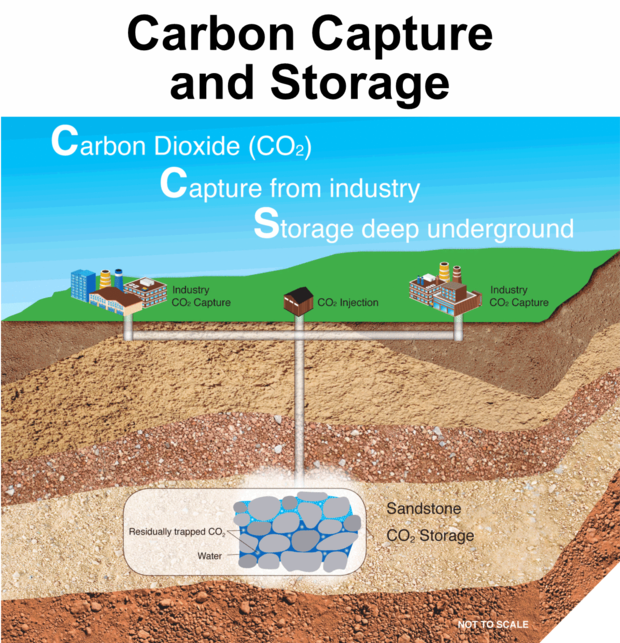What is Carbon Capture and Storage?
Carbon Capture and Storage (CCS) is an emission reduction process designed to prevent large amounts of carbon dioxide (CO2) from being released into the atmosphere. The technology involves capturing CO2 produced by large industrial plants, compressing it for transportation and then injecting it deep into a rock formation at a carefully selected site, where it is permanently stored.
Although CCS is often referred to as a single idea, it involves the three major steps listed below and uses different types of technologies.
- Capture - CO2 is separated from other gases produced at facilities such as coal, natural gas and cement power plants, oil and gas refineries, and steel mills.
- Transport - CO2 is compressed to a ‘dense phase’ or liquid-like state to make it easier to transport to a suitable site for geological storage using pipelines.
- Injection and storage - CO2 is injected into underground rock formations, usually at depths of one kilometre or more. The formations into which CO2 is injected are deep rock formations that contain brines or water saltier than the ocean.
The porous rock formations are referred to as deep saline formations or saline reservoirs and they are almost always sedimentary rocks like sandstone or limestone. These rock formations offer secure space to permanently store CO2. They contain tiny pores capable of storing large quantities of CO2 trapped as small droplets.

